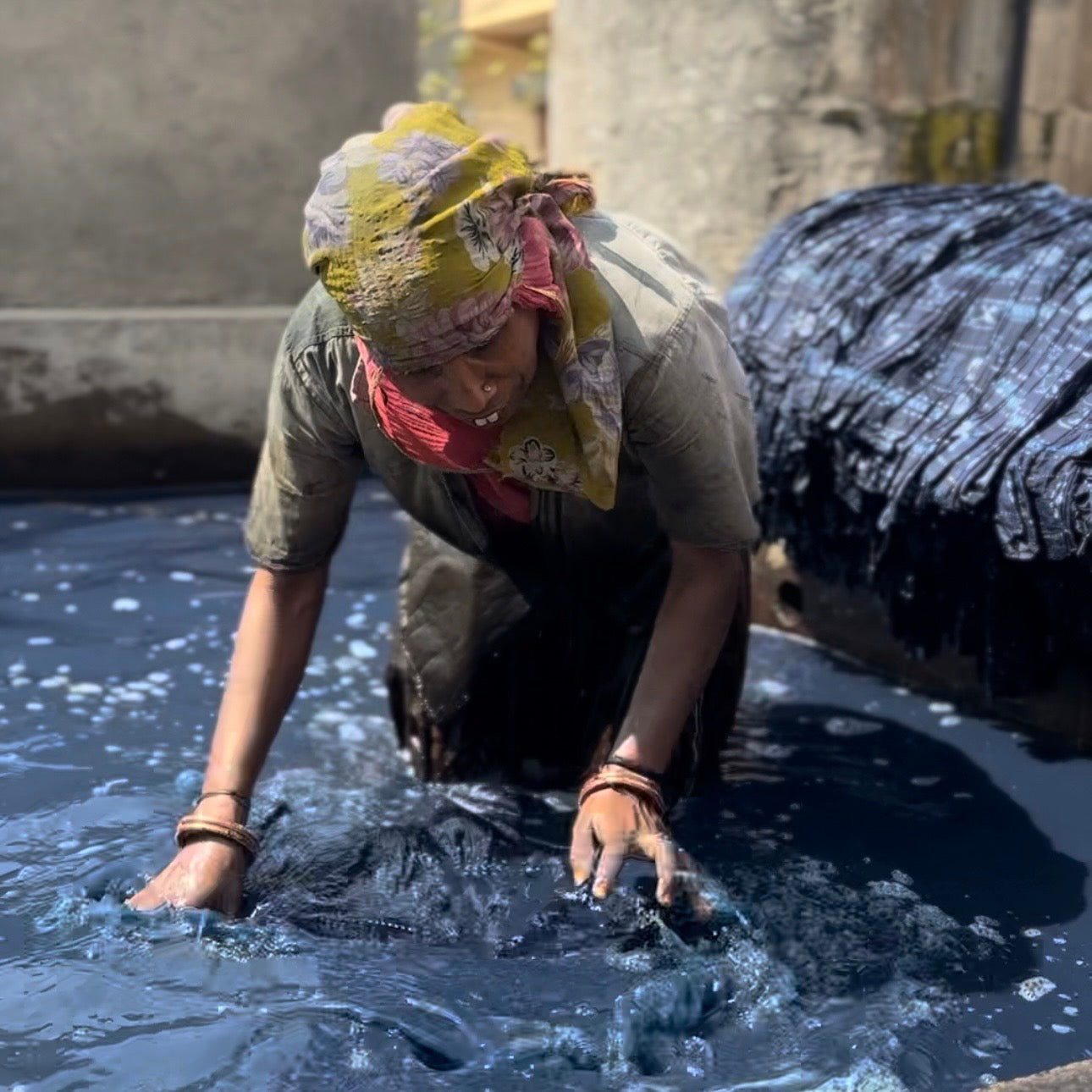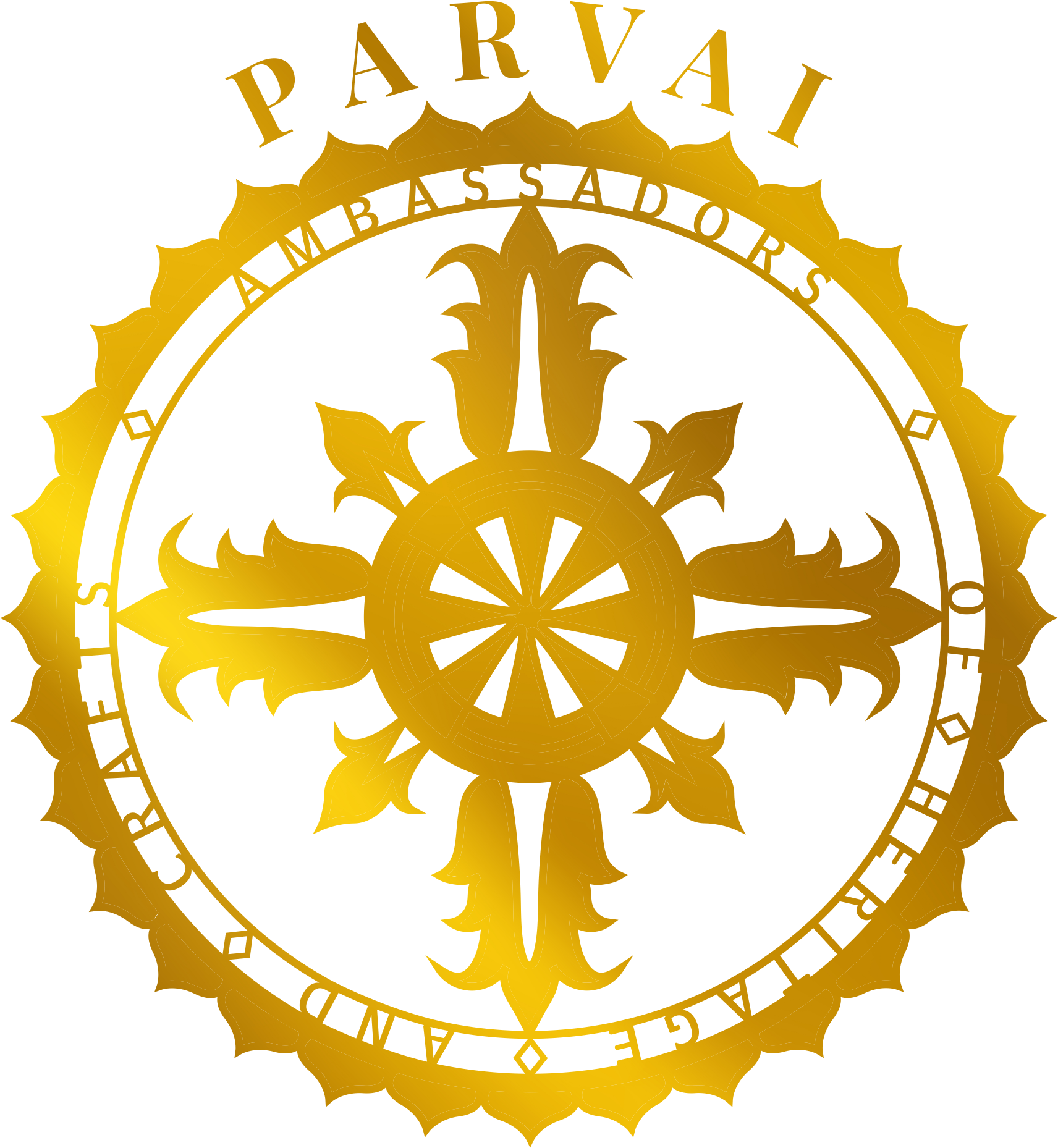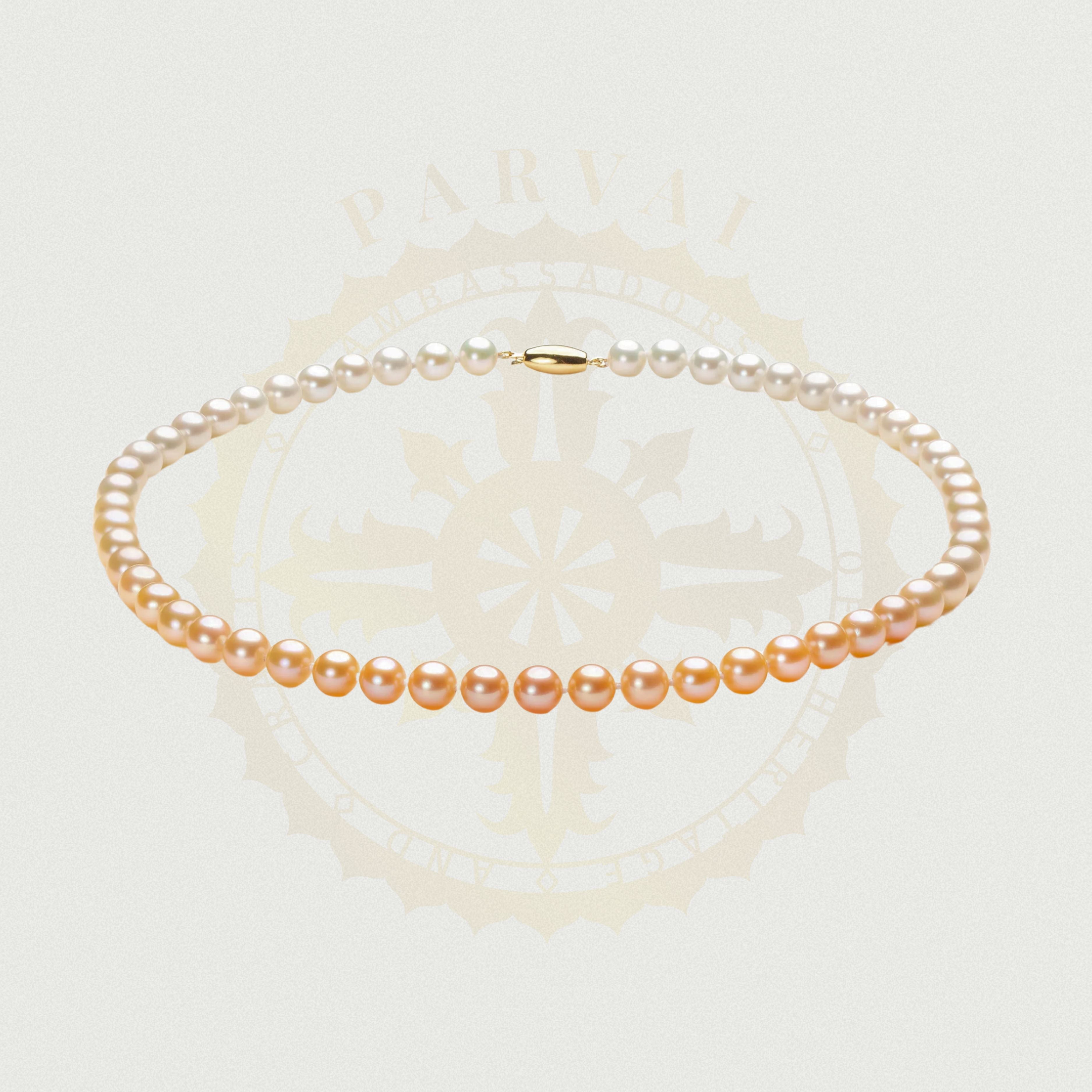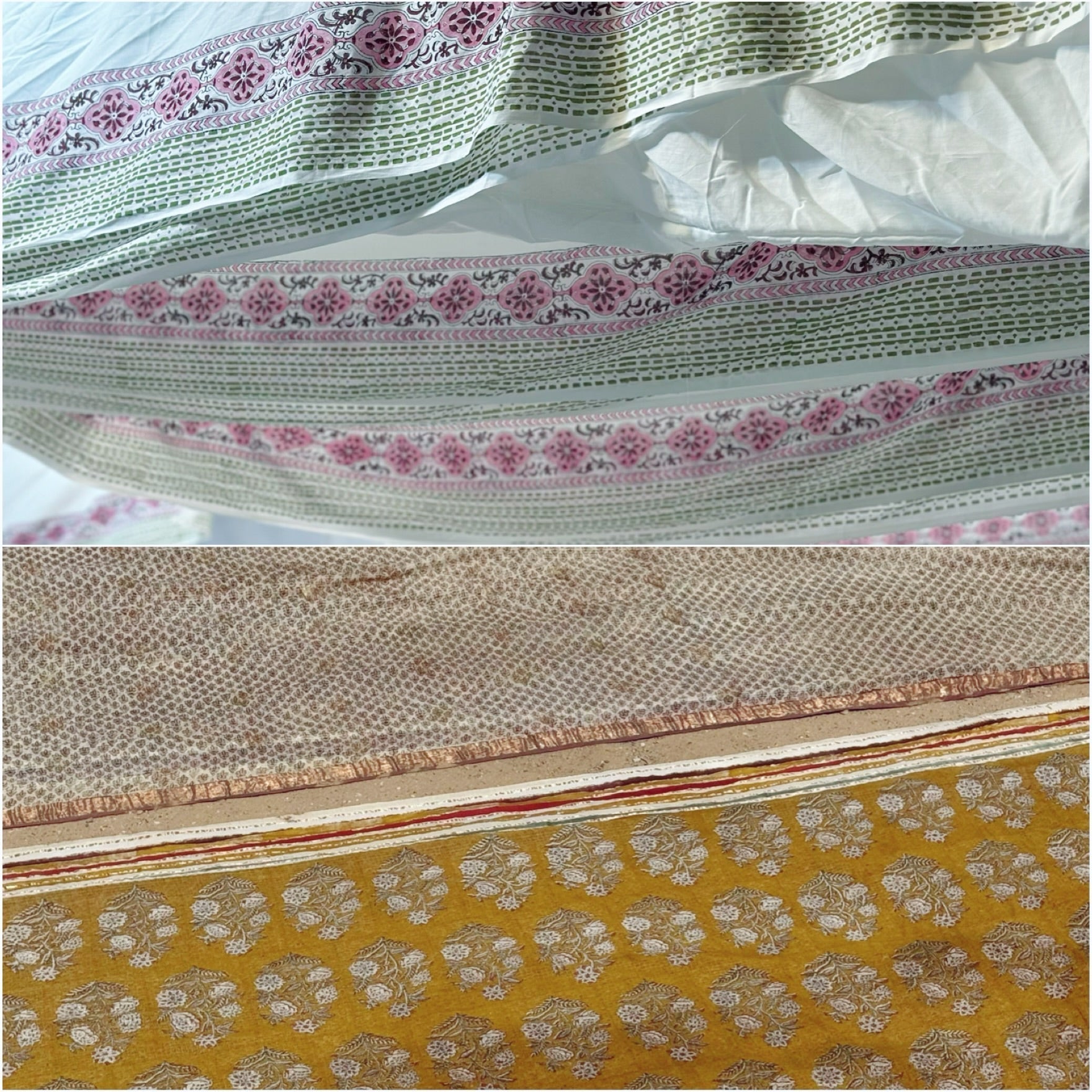
The Soul of Hand Block Printing: A Parvai Perspective
Observations from Our Time in Jaipur, Sanganer & Bagru
I. Where Water Flows, Craft Follows
Traditionally, wherever water touched the soil of Rajasthan, a craft took root. Natural water bodies—wells, lakes, rivers—were not just lifelines but lifelines for hand block printing. These ecological pockets became home to clusters of printer families who served the textile needs of their communities. Each village printed not just cloth, but identity, belief, and belonging into fabric.
Districts like Jaipur, Udaipur, Barmer, Jodhpur, Kishangarh, Pali, Kota, Tonk, and Sawai Madhopur developed distinctive printing traditions that thrived within their local ecosystems. In Jaipur alone, five towns—Sanganer, Bagru, Kaladera, Jairampura, and Jahauta—became iconic for textile work.
These centres once produced a wide range of traditional garments—ghagras, odhna, safas—as well as home textiles like godadis (quilts), cushion covers, and running fabric lengths. Each piece was hand-printed with carved blocks and dyed with botanical extracts. These were not mere products; they were acts of devotion, passed through generations.
II. Parvai in Bagru: An Encounter with Living Heritage
When we at Parvai visited Bagru, we weren’t just documenting a craft. We were entering a world where every wall, lane, and rooftop whispered stories of colour, resistance, and quiet brilliance. The scene was poetic in its focus: men moved silently, swiftly, with the practiced elegance of those who’ve done the same task for decades. Blocks thudded in rhythm, dye pots simmered, and lines of drying cloth fluttered like flags of an ancient kingdom still alive.
As a woman-led organization, we were especially attentive to the presence—and absence—of women. It didn’t take long to notice: the environment was overwhelmingly male-dominated. Yet, the few women we met stood out—not only because of their rarity, but because each one carried a story of resilience, agency, and deep-rooted skill. These women were not background helpers; they were quiet revolutionaries.
III. The Gendered Geography of Print
Traditionally, the Chhipa caste (from chhapna, to print) held the mantle of hand block printing. But it was never a solitary effort. This art is deeply collaborative, involving:
-
Weavers (Bunkar) who supply the cloth
-
Block carvers (Kharadi or Kharawaadi) who craft the printing blocks
-
Printers (Chhipa) who stamp and align each motif
-
Washers (Dhobi) who manage intense pre- and post-treatment
-
Dyers (Rangrez) who work with both plant-based and pigment dyes
Traditionally, men occupied the “visible” and “skilled” roles, especially color preparation, considered a sacred, almost guarded act. When we inquired, some women confided that men feared the “secrets” of colour might spread if women—seen as more socially open and connected—learned the process. And so, the myth that women could assist but not lead in craft persisted.
Yet, the reality is more nuanced.
Women prepare the fabric, assist in block alignment, and manage drying, folding, sorting, and more. Increasingly, they also print, particularly in pigment and dabu stages. Many women in their thirties, whose children are away at school, now use this window to work and earn. And elderly women, whose lives have always revolved around the craft, continue not out of compulsion alone—but because it gives them identity, purpose, and dignity.
Still, societal barriers remain. Only about 20% of women are well-versed in the full block printing process, and nearly 40% are illiterate. Many can’t access formal training or documentation of techniques, limiting their ability to innovate or teach the next generation. Marriage and household obligations often curtail their artistic aspirations.
At Parvai, we are steadily building meaningful collaborations with women artisans from Bagru, inviting them to join us in various capacities such as printing, dyeing, and embellishing our creations.
We recognise that for many of these women, stepping beyond the threshold of home to pursue their craft and gain exposure requires more than opportunity—it demands support, encouragement, and collective effort. We are committed to providing the structure and care needed to make this transition possible.
This is not just about work. It’s about honouring their artistry, creating a space for expression, and offering a dignified path to independence through heritage craft.
With time, care, and community, we are confident that in the coming years, at least 30% of our work will be carried out by women artisans, making Parvai not just a platform of craftsmanship but one of empowerment.
IV. A Fading Inheritance: The Challenge of Continuity
In our conversations, we noticed another shift—younger members of the Chhipa community are reluctant to continue the craft. Many see it as lacking dignity compared to salaried, white-collar professions. They’ve witnessed their parents toil for hours under the sun, hands stained with indigo, spines bent in discipline, and they ask: What did it yield?
This generational detachment is dangerous. Without knowledge transmission, the technique becomes fragmented. Women artisans—especially those with partial knowledge—may be left with labour roles under the supervision of a few "masters" rather than being full custodians of the tradition. The continuity of the craft requires not just interest but respect, education, and structure.
Yet, all is not lost.
The Bagru block printing process remains profoundly beautiful and intact in parts. For families that do continue, it is a way of life—still communal, still bound by rhythm and ritual. The process includes:
-
Fabric Preparation – Soaking in harad solution, sun-drying
-
Natural Dye Creation – Using ingredients like madder, turmeric, iron, indigo
-
Paste Preparation – Mixing with alum, gum, and tree resins
-
Hand Block Printing – Aligning and stamping the motifs
-
Dabu Printing – Applying mud-resist paste, drying under sun
-
Dyeing and Fixing – Immersing in vats, steaming or fixing the color
-
Washing and Finishing – Releasing the cloth into its final, stunning form
V. The Path Forward: Restoration Through Recognition
From the Eyes of Artisans and the Hearts of Conscious Patrons
In today’s fast-moving, hyper-commercial world, traditional craft often finds itself reduced to trend or ornamentation—its soul diluted, its story forgotten. But the path forward for hand block printing must be one that restores dignity, depth, and discernment—through the active participation of both artisans and conscious patrons.
For artisans, this means taking pride not just in their labor, but in their legacy. The time has come to reclaim authorship—to no longer remain silent behind the cloth, but to speak up and educate patrons about the long-drawn, layered processes that give each piece its integrity. From fabric preparation and dye fermentation to block alignment and dabu resist, every stage is an act of care that deserves to be seen, known, and valued.
Artisans must become not just makers, but storytellers and stewards of their craft. By inviting patrons into the process—through demonstrations, documentation, or even conversation—they help shift the narrative from product to process, from commodity to culture.
For conscious patrons, the path forward lies in recognizing and discerning the brilliance of age-old techniques. It means resisting the lure of convenience and instead choosing pieces that speak of tradition, slowness, and mastery. A truly conscious patron does not merely shop—they invest. They seek out masterpieces—works of layered block printing that take days, sometimes weeks, to complete. These are not just garments or textiles; they are artworks. They carry the weight of history and the spirit of place.
To preserve hand block printing in its true form is to preserve its entire ecology—the woodblock carvers, the dyers, the washers, the women who assist with precision and grace, the elders who hold oral histories, and the few who still remember the names of forgotten motifs.
Together, artisans and patrons can build a future where craft is not merely sustained—but celebrated, elevated, and deeply understood. A future where the hands that create and the hearts that appreciate move in unison, keeping this remarkable tradition alive not just as heritage, but as a living art.
Conclusion: A Craft Written by Many Hands
Bagru is not just a village. It is an archive. A living studio. A landscape of intergenerational intelligence.
And what we saw there, through Parvai’s lens, was not only the beauty of the block or the brilliance of the dye—but the deep human choreography of it all. Men and women. Past and present. Labor and love.
The art of hand block printing is not dying—it is waiting: to be recognized, revived, and rewoven into the fabric of contemporary life, where dignity, tradition, and equality are not ideals—but the foundation.





2 comments
yay69q
* * * <a href="https://www.olipap.ch/index.php?hwjvop">Get Free Bitcoin Now</a> * * * hs=ed79c5125142268d235d58216b9ef361* ххх*
yay69q
* * * Win Free Cash Instantly: https://www.olipap.ch/index.php?hwjvop * * * hs=ed79c5125142268d235d58216b9ef361* ххх*
Leave a comment
This site is protected by hCaptcha and the hCaptcha Privacy Policy and Terms of Service apply.